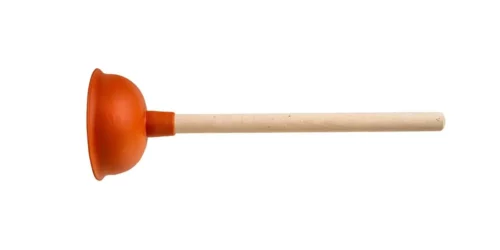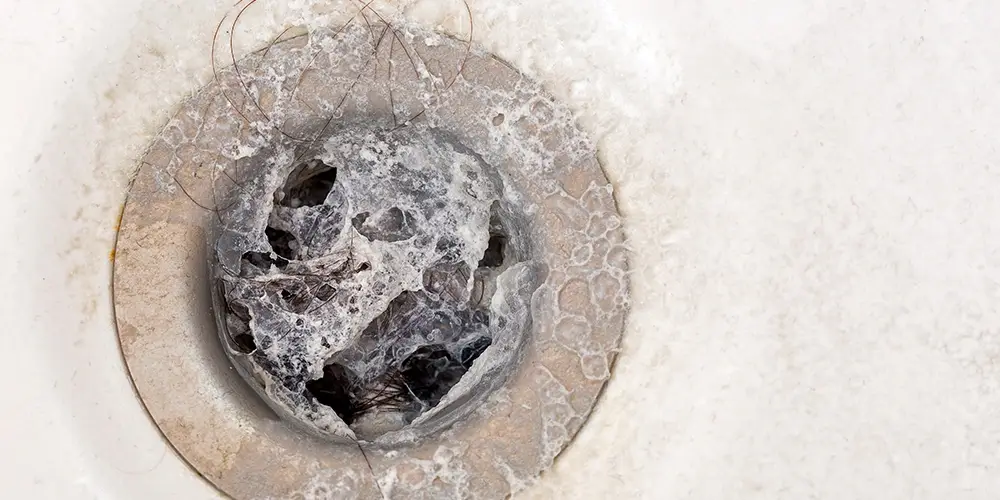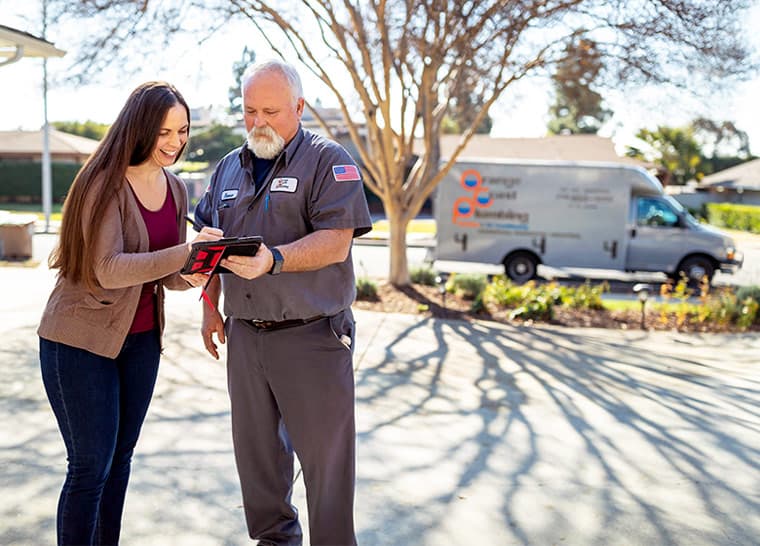There’s nothing like a slow drain to put a damper on a refreshing shower.
Worse, the water may not drain at all — it just sits in the bottom of the tub.
Fortunately, a clogged shower drain is usually an easy fix. Here are some simple things you can do to clear a clog.
1. Use Your Finger to Clear Hair & Soap Scum Clogs
Most shower clogs occur at the drain or just below it. Hair and soap scum are the typical culprits.
Remove the drain cover and use your finger to search for a clog in the pipe. If you don’t see any, try using a long flexible wire to probe for the blockage and dislodge it. Never force anything down into the pipework, as this can damage it.
2. Use Boiling Water to Clear Greasy or Caked Clogs
Sometimes, the simplest solution is the best. Boiling water can often break up a clog and send it down the drain.
Once you’ve removed the drain cover, pour several kettles of boiling water into your shower pipe slowly and see if that does the trick.
3. Use Baking Soda & Vinegar as a Natural Drain Cleaner
Pour 1/2 cup of baking soda into the pipe, followed by 1/2 cup vinegar. The two ingredients will react and start fizzing.
Cover the drain to keep the reaction contained and let it sit for 15 minutes before pouring a kettle of boiling water down the drain. This mixture works wonders to break up stubborn clogs.
4. Use a Sink Plunger to Clear Standing Water
A plunger is a natural choice for clogs with standing water, which creates a tight seal for the plunger and the perfect conditions to pull the clog free.
Air in the plunger’s cup reduces suction and effectiveness.
A toilet plunger won’t work for a clogged bathroom drain. Only a “cup plunger” or sink plunger will.
How can you tell the difference? A toilet plunger has a high bell and a flange underneath, which looks like a little skirt.
A sink plunger has a low bell without a flange — it’s the “old school” plunger with a simple design for relatively flat surfaces like your shower floor.
Apply a few short thrusts straight down, then release and repeat a few times until the clog clears. Don’t ever, for Pete’s sake, plunge a drain where you’ve added chemical drain cleaner!

Cup plunger for sinks and showers
5. Use a Drain Stick or Snake for Stubborn Clogs
A plumbing snake, or auger, is the next step for tough clogs. It’s a long cable with a spiral end for hooking and removing pipe debris.
Thread the snake into the drain pipe until you reach the blockage. Twist and pull the cable to scrape away gunk from inside the pipe walls. Exercise caution when handling the snake, as it can damage the pipe.
A drain stick is a cheaper but effective probing and clearing tool with less reach. But as a bonus, it’s less likely to damage pipes.
6. Call a Plumber When All Else Fails
Professional plumbers have specialized tools to help them locate and clear even the most difficult clogs. These include powerful water jets, pipe cameras, and motorized snaking equipment.
Water jets use a forceful stream of heated or pressurized water to blast away debris and scum from pipes without damaging them.
Cameras can pinpoint the location of the blockage, making it easier for a professional plumber to know where to focus attention and what tool to use.
Plumbers also have special tools to cut through tree roots or other debris infiltrating your pipes.
And if a collapsed or corroded sewer pipe is responsible for the clog, a plumber can recommend the best repair or replacement option.
It’s critical to call a qualified plumbing professional when all else fails. Removing a stubborn clog with caustic chemicals could cause further damage and result in costly repairs down the line.
FAQs: Unclogging a Shower Drain
Q: What preventive measures can I take to avoid clogged shower drains in the future?
Consider using a drain cover to catch hair and larger debris before it enters the pipe. Regularly clean the cover and remove accumulated hair. Additionally, pouring hot water down the drain weekly can help prevent soap scum buildup. Avoid flushing anything other than water down the drain.
Q: Are there any household items I should avoid when clearing a clogged drain?
Steer clear of chemical drain cleaners, which are highly corrosive and can damage your plumbing over time. Avoid using tools that can scratch or chip pipe surfaces, like metal hangers, as they can lead to leaks or further clogs.
Q: How do I know when it’s time to call a plumber?
If you’ve tried DIY methods without success or if you notice signs of water damage, unpleasant odors, or slow drainage in multiple fixtures, call a professional plumber. Persistent clogs may indicate deeper issues within your plumbing system.
Q: How can I tell if the clog is in the drain or further down the plumbing system?
If water is draining slowly from your shower and completely backing up in other fixtures, the issue is likely further down the plumbing. Listening for gurgling sounds further down the drain.
Q: Can hair clogs cause permanent damage to my plumbing?
Hair clogs usually don’t cause permanent damage. However, prolonged accumulation can lead to pipe corrosion or breakage if left untreated.
Q: What are some warning signs of a serious drain issue?
Look for signs like recurring clogs, water backing up in other drains, foul odors emanating from the drain, or unusually wet spots around your home. These symptoms may point to serious plumbing issues that require professional attention.
Q: How can I improve my shower drain’s drainage?
Start using a hair catcher, clean your drain and cover weekly, and flush the pipes with boiling water monthly to prevent soap scum buildup. Avoid pouring oils or greasy substances down the drain.
Q: Are there any environmentally-friendly options for clearing a drain?
A combination of baking soda and vinegar is an eco-friendly method to clear tough clogs. Another alternative is a mixture of salt and baking soda, followed by hot water, which works well in breaking down grease.
Q: What is the best type of drain cover to prevent clogs?
Opt for a drain cover with a fine mesh that allows water to flow freely while trapping hair and larger debris. Ensure it’s easy to remove for regular cleaning.


